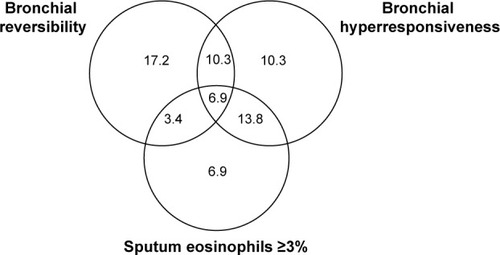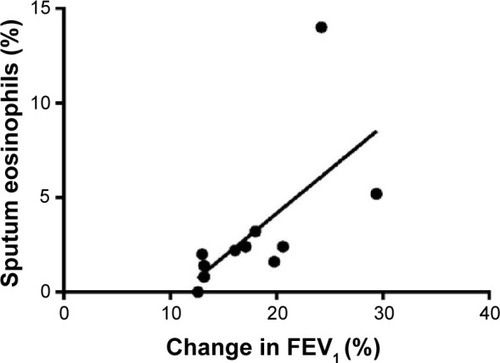Figures & data
Table 1 Clinical and functional characteristics of the studied patients
Table 2 Induced sputum cells in mild and moderate COPD subjects
Figure 1 Venn-diagram showing the percentage distribution of bronchial reversibility, bronchial hyperresponsiveness, and sputum eosinophilia in the COPD subjects enrolled in the study.

Table 3 BHR, reversibility, symptom score, and exacerbations in COPD patients considered altogether and divided according to sputum eosinophils


